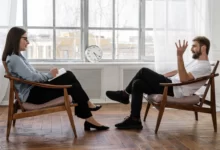In the tapestry of every flourishing relationship, there are threads of togetherness and independence intricately woven together. Finding the harmonious balance between these two elements is essential for nurturing a relationship’s growth and resilience. While the concept of giving space might initially seem counterintuitive to building a strong connection, it is, in fact, a vital ingredient that ensures both individuals have the freedom to blossom while maintaining a close bond. In this article, we will delve into the art of giving space within a relationship – what it entails, why it’s important, how to navigate its complexities, and the positive impact it can have on overall well-being.
Understanding the Concept of Giving Space:
Giving space within a relationship isn’t synonymous with emotional distance or detachment. Instead, it signifies a deep respect for each other’s individuality, needs, and boundaries. It acknowledges that both partners possess unique identities, passions, and pursuits that deserve dedicated time and attention. By giving space, we recognize that healthy relationships are built on the foundation of mutual respect, trust, and the freedom to grow both as individuals and as a couple.
Why Giving Space Matters:
- Preservation of Identity: Allowing space enables individuals to retain their sense of self, personal interests, hobbies, and passions. This prevents a feeling of being consumed or overshadowed by the relationship, ultimately leading to a more balanced life.
- Promotion of Growth: Personal growth often thrives through self-discovery, pursuit of individual goals, and facing challenges independently. By giving space, we foster an environment where growth is nurtured.
- Reduction of Resentment: A lack of space can lead to feelings of resentment or suffocation. By providing the freedom to pursue individual interests, we prevent negative emotions from festering.
- Strengthening Trust: Granting space signifies a level of trust and mutual respect. It signals confidence in each other’s decisions, actions, and judgment.
Navigating the Balance:
- Open Communication: The cornerstone of successfully giving space is open and honest communication. It’s essential to have conversations about the need for space, discuss boundaries, set expectations, and express the reasons behind these needs.
- Self-Awareness: It’s important for each partner to understand their own needs for space and encourage their significant other to do the same. This self-awareness lays the groundwork for a healthy balance.
- Scheduled “Me Time”: One practical approach is to allocate specific times or days for personal activities. This way, both partners can enjoy dedicated periods to engage in their individual pursuits without feeling guilty or disconnected.
- Respect and Trust: It’s vital to trust that your partner’s need for space isn’t a reflection of the health of your relationship. By respecting their boundaries and choices, you foster an environment of mutual support.
The Positive Outcomes of Giving Space:
- Enhanced Connection: Paradoxically, giving space can lead to a deeper emotional connection. When individuals are content and fulfilled individually, they bring more to the relationship, creating a richer and more fulfilling bond.
- Appreciation for Togetherness: Time spent apart enhances appreciation for shared moments. These moments become more meaningful and cherished, as they are balanced by periods of personal growth and reflection.
- Personal Fulfillment: The pursuit of individual passions, interests, and goals contributes to personal fulfillment. This sense of fulfillment enriches the relationship, as content individuals tend to be happier partners.
Real-Life Examples:
- Anna and Mark: Anna’s passion for painting led her to dedicate certain evenings to her art. Not only did this practice enrich her personal growth, but it also inspired Mark to explore his own hobbies and interests.
- Elena’s Career Pursuit: Elena’s decision to pursue further education allowed her partner to wholeheartedly support her journey while also focusing on his own aspirations. This mutual understanding led to a stronger bond.
Case Study: Alex and Maya’s Journey:
Alex and Maya faced challenges in finding equilibrium between their demanding careers and nurturing their relationship. However, by openly discussing their individual needs for space, they collaboratively devised a plan that accommodated both their professional ambitions and their desire to maintain a loving and meaningful relationship. This approach not only strengthened their bond but also allowed them to thrive independently.
Conclusion:
The art of giving space is a profound reflection of the maturity and depth of a relationship. It embodies a delicate blend of respecting each other’s autonomy while fostering a strong emotional connection. By allowing room for individual growth, interests, and aspirations, couples create an environment where both partners can flourish as individuals and as a united force. This balance enriches the relationship, promotes personal fulfillment, and enhances overall well-being. As you navigate the intricate dance between togetherness and independence, remember that giving space is an act of love that nurtures not just the relationship but also the souls of those involved. By embracing the art of giving space, you lay the foundation for a harmonious partnership that empowers both partners to thrive and contribute to each other’s personal growth and happiness.









